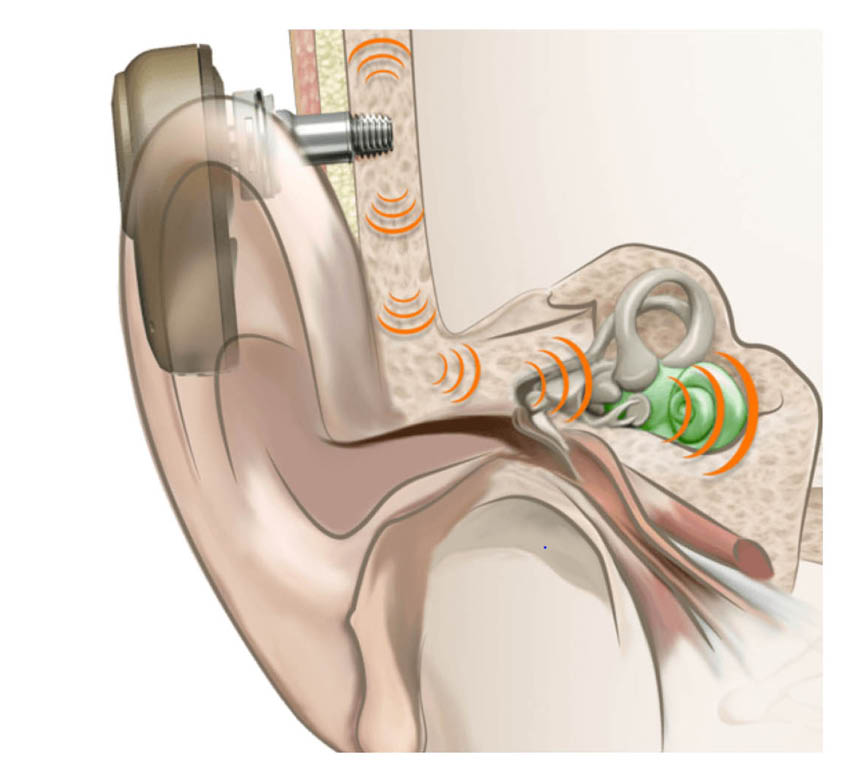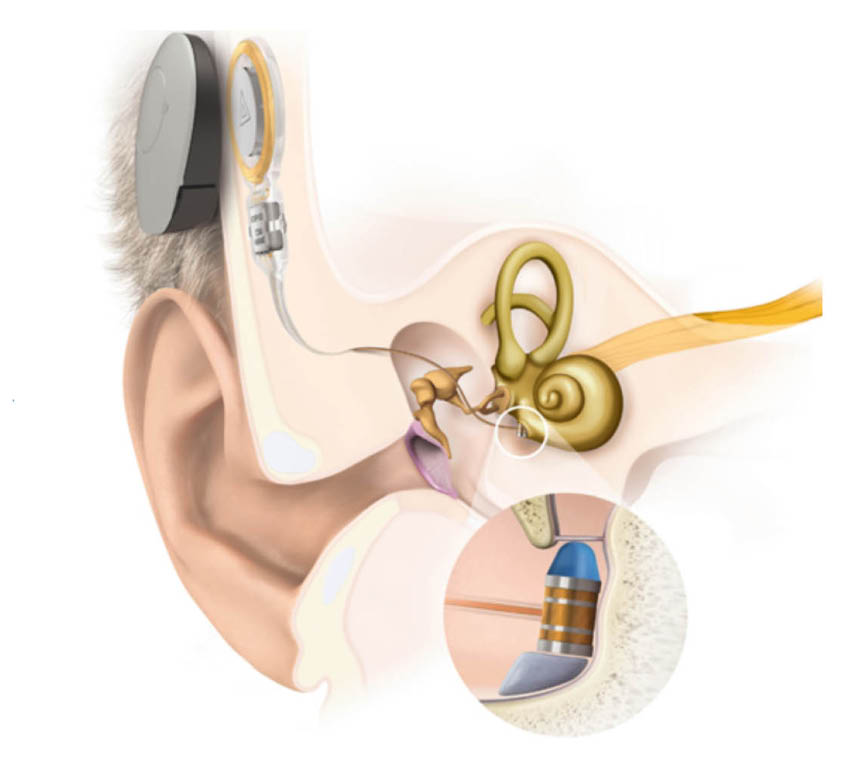Hearing Implant Service
Information for patients from the Audiology Department
You may be considered for hearing implants and processors if:
you find that normal hearing aids are not suitable, and
you fit the medical and audiological criteria listed below.
The Hearing Implant Service is a joint service with the Audiology and Ear Nose and Throat (ENT) departments. The service provides patients with bone implants, middle ear implants, and processors.
This leaflet will explain:
what the medical and audiological criteria is
how the process works; and
what devices are available.
If you have any questions after reading this leaflet, please speak to your audiologist or otologist.
What is the medical and audiological criteria?
We may consider you for hearing implants and processors, if you have one of the following conditions.
Conductive hearing loss: there is a problem delivering sound energy to your cochlea, the hearing part in the inner ear. The problem could be a perforated ear drum or a disorder of the hearing bones.
Mixed hearing loss: there may be damage in your outer or middle ear, and in your inner ear or nerve pathway to your brain.
Single-sided deafness (SSD): you have no functional hearing in one ear. The hearing in your other ear may range from normal to significantly impaired.
What happens during the referral process?
Stage 1
ENT (Otology) and Audiology Triage will decide whether you meet the criteria for implants and processors. If you do, you are referred to the Hearing Implant Service.
Stage 2
The Hearing Implant Service will carry out various hearing tests and discuss your options with you.
Staff will show you how the available devices work.
You will be fitted with a soft / hard band or SoundArc to processor for at least 2 weeks. This is so you can trial the device in different places and situations, to see if it works for you.
Please note: There is no trial for the BoneBridge, Vibrant SoundBridge (VSB), OSIA and Sentio devices due to the passive nature of the implants. Passive nature means that the device is fully implanted, so it cannot be trialled.
Stage 3
After the trial, you will have a follow-up appointment with Audiology.
If the device worked, you will decide with the audiologist and otologist whether to have the device fitted. The final decision will be made at a multi-disciplinary team (MDT) meeting.
Stage 4
If you decide to have the implant fitted, the otologist will do this surgically.
You will have a local anaesthetic (you are awake but the area is numb) or general anaesthetic (you are asleep during surgery) for this procedure.
Stage 5
After surgery, the Audiology team will fit your processor. This will involve programming and tuning the device.
All aftercare issues are dealt with by the Audiology team.
If you have questions or concerns at any stage, please speak to your audiologist or otologist.
What implants and processors are available?
Our service provides the following implants and processors.
Medel Adhear (no implant needed, a bone conduction hearing aid / processor)
Cochlear BAHA (bone anchored hearing aids)
Oticon Medical Ponto
Medel BoneBridge
Medel Vibrant SoundBridge
Cochlear OSIA
Oticon Medical Sentio
Bone conduction is a term that describes how sound waves travel through the skull to reach the inner ear (cochlea) and beyond.
Bone implants can be passive (transcutaneous) or active (percutaneous).
-
 Medel AdHear. Image courtesy of MED-EL UK Ltd.
Medel AdHear. Image courtesy of MED-EL UK Ltd. -
 Cochlear BAHA, Ponto and processor. © Cochlear Limited 2023. Image courtesy of Cochlear Limited.
Cochlear BAHA, Ponto and processor. © Cochlear Limited 2023. Image courtesy of Cochlear Limited. -
 Medel Bonebridge and processor. Image courtesy of MED-EL UK Ltd.
Medel Bonebridge and processor. Image courtesy of MED-EL UK Ltd.
-
 Medel Vibrant Soundbridge and processor. Image courtesy of MED-EL UK Ltd.
Medel Vibrant Soundbridge and processor. Image courtesy of MED-EL UK Ltd. -
 Cochlear OSIA and processor. © Cochlear Limited 2023. Image courtesy of Cochlear Limited.
Cochlear OSIA and processor. © Cochlear Limited 2023. Image courtesy of Cochlear Limited. -
 Oticon Medical Sentio and processor. Image courtesy of Oticon Medical.
Oticon Medical Sentio and processor. Image courtesy of Oticon Medical.
How do I care for my hearing implant?
You are responsible for cleaning the implant site.
Audiology will provide you with:
batteries
replacements parts and processors, and
upgrades.
They will also fine tune and program the processor when needed. For more information, please contact Audiology.
Useful websites
What if I have any questions or concerns?
If you have any queries about your hearing implants, please contact the Audiology Department.
Audiology Department
Telephone: 01227 864252
Lines are open 10am to 12 noon, and 2pm to 4pm
Email